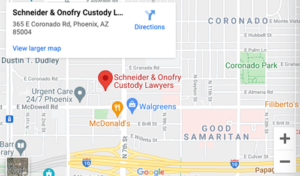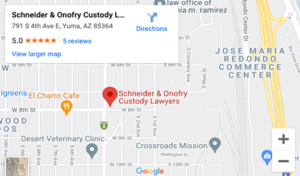Protecting Assets at Risk: Bankruptcy Options for Individual Investors and Other Business People
For debtors in this situation, there are various avenues of recourse. For example, rather than waiting for creditors to initiate collection actions, debtors can be proactive by contacting their creditors to negotiate arrangements to resolve their troubled debt. Such agreements may include requesting that the creditor discount the debt, extend the term for repayment, or reduce the interest rate. Before considering such requests, creditors will likely insist that the debtor provide updated financial information on which any concessions will be based. These negotiations are sometimes referred to as “workouts” or “out-of-court restructurings.”
Such workout discussions may or may not be successful. Negotiations can stagnate, for example, where (i) a creditor is asking for more than the debtor believes is appropriate or can reasonably pay; (ii) the debtor has multiple creditors or troubled loans and is unable to reach an agreement with respect to all of them; or (iii) the debtor has better options under the Bankruptcy Code (the “Code”).
Diplomatically presented, the possibility of bankruptcy protection often can provide debtors valuable leverage in workout discussions; and pragmatic creditors may prefer a non-bankruptcy resolution; however, coercive threats of bankruptcy also may doom such discussions and end them. Creditors consider themselves justly owed the debt and may quickly, and sometimes irrevocably, dig in their heels at what they perceive as heavy-handed threats of bankruptcy in order to avoid payment.
Creditors know that bankruptcy can prevent them from proceeding with collection activities, likely will involve additional out-of-pocket costs and expenses to them, and can enable debtors to reduce, stretch out, or otherwise limit the recovery on their claims. Thus, pragmatic creditors may prefer a non-bankruptcy resolution.
It is paramount at the workout stage for debtors to fully consider and understand their options under Chapters 7, 11, and 13 of the Code, including the advantages, costs and risks associated with each. Only then can they assess the type of relief most likely to accomplish desired objectives, and how much they may want to offer their creditors in order to avoid bankruptcy altogether.
Interestingly, the means test applies to those with “primarily” consumer debt. The courts have interpreted “primarily” to mean more than half in aggregate dollar amount of all debts.(1) The means test does not apply to those with primarily business or investment-related debt. Such persons may still file for Chapter 7 relief, regardless of their current income levels.
Debtors who file for Chapter 7 relief do so primarily to become discharged from personal liability on their debts. They are required to disclose their assets and debts, and it is then up to a bankruptcy trustee to determine whether there are any assets that can be liquidated to generate a distribution to creditors. That, in turn, requires (i) an estimate of asset values and (ii) a careful analysis of whether, and to what extent, certain assets are “exempt,” or protected from creditors’ claims under applicable law. In this article, the non-exempt, unencumbered portion of the assets is referred to as “Assets at Risk.”
Chapter 7 debtors may still need to service debt secured by assets abandoned by the trustee that the debtor wishes to retain, such as the mortgage on the family home or a car loan. Otherwise, Chapter 7 debtors generally are able to shed their debts and are not obligated to make future payments to the unsecured creditors to whom they were indebted prior to filing for Chapter 7 relief.
Assuming a debtor has primarily business or investment-related debt, why, then, would he or she voluntarily choose to file under Chapter 11 or 13?
In exchange for retaining assets, the debtor’s plan must, at a minimum, provide (i) restructured debt payments to secured creditors on the secured portion of their claims and (ii) payment to unsecured creditors of at least as much as they would receive in a Chapter 7 liquidation. The former calls for a valuation of the secured creditor’s collateral, whereas the latter calls for an analysis of the liquidation value of the Assets at Risk. The higher the liquidation value, the more that must be paid to unsecured creditors under the plan.
Another reason some debtors may prefer Chapters 11 or 13 over Chapter 7 is to restructure the repayment terms of secured debt. There are restrictions on doing so, however, over the creditor’s objection where the debt is secured by the debtor’s primary residence.(2) Even so, Chapter 11 or 13 debtors still may strip off a junior lien on a primary residence that has a value less than the senior liens.(3) This cannot be done in Chapter 7 and, absent a non-bankruptcy workout, can only be done through a Chapter 11 or 13 plan.
While a decision to restructure under Chapters 11 or 13 may be the best way for a debtor to retain Assets at Risk and restructure secured debt, it should not be made lightly. Restructuring can involve significant risk and expense, legal and otherwise. It also imposes and requires the debtor to perform special duties, including those of reporting and disclosure,(4) and transactions outside the debtor’s ordinary course of business will require advance bankruptcy court approval.
A bankruptcy filing also will put the debtor and the debtor’s past dealings in what one of our bankruptcy judges has termed “a fishbowl.” It will provide creditors a forum in which to conduct discovery and otherwise obtain information from the debtor, question financial arrangements with insiders and affiliates, question and possibly attack the propriety of pre-bankruptcy transactions (including those involving family members and other insiders), seek adequate protection of any interests in collateral, seek relief from the bankruptcy stay to foreclose liens, and seek the appointment of an examiner to investigate and oversee or a trustee to operate the debtor’s affairs. A bankruptcy filing also may result in the debtor’s loss of credit, including credit cards; impair the debtor’s ability to borrow; and increase the cost of credit. It also could adversely affect the amount a prospective buyer is willing to pay for the debtor’s assets. Finally, the legal fees for Chapter 13, and especially Chapter 11, bankruptcies can be significant; and one or more aggressive creditors can greatly increase them.
With proper lead time and preparation, experienced counsel can help debtors appreciate these risks, evaluate Assets at Risk and available exemptions, avoid potential hazards, and increase the chances of successfully confirming a plan. Further, just as a good coach prepares a game plan before the competition begins, good counsel can help debtors, whenever possible, compose their plans before they file. Debtors who do so are more likely to successfully confirm a plan of their liking – in less time and at a lower expense – than if they had waited until the eleventh hour.
Unlike Chapter 13, Chapter 11 is a semi-democratic process in which creditors have the right to vote on the plan. Thus, while some creditors and “creditor classes” (voting groups of creditors) may vote against the plan, Chapter 11 requires that at least one non-insider creditor class (the rights of which have been impaired or altered by the plan) vote in favor of it before it can be confirmed.(5) This encourages deal-making as part of the plan confirmation process. For example, a creditor that initially opposes the plan might be persuaded to support it if changes are made to improve that creditor’s treatment. Any such improved treatment must, however, apply as well to all other creditors of the same class and cannot unfairly discriminate against creditors in other classes. The creditor voting requirement can complicate and add to the cost of an individual Chapter 11 case.
Reasons may include:
- Eligibility.
Some debtors are not eligible for Chapter 13 relief, which requires the debtor to have “regular income” and that the debtor’s debt fall below certain levels (currently, unsecured debts must total less than $360,475 and secured debts must total less than $1,081,400).(6) If either (i) the debtor does not have “regular income” or (ii) either debt level is exceeded, Chapter 13 relief is not available. - Restructuring secured debt beyond five years.
Debtors who seek to restructure a secured debt (including stripping off the undersecured portion of a partially secured claim) for repayment over more than five years must do so in Chapter 11. Chapter 13 does not allow such restructurings beyond five years. Instead, a Chapter 13 plan must provide for distribution of an amount not less than the secured portion of the claim in the form of equal monthly payments over the life of the plan.(7) If the secured portion of the claim is substantial, it may not be feasible to fully repay it within five years. In such situations, Chapter 13 is not a viable option. - Pace.
Chapter 13 requires that the debtor file a plan at the beginning of the case and has a prescribed pace. For example, Chapter 13 debtors typically must file their plans when they file their case or within fourteen days thereafter.(8) Chapter 11 debtors, by comparison, have more flexibility regarding the pace. They generally have the exclusive right to file a plan at any time within the first four months of the case (the “exclusivity period”). That period might be extended for cause; and even after it expires, a plan can still be proposed, although others can then propose one as well or seek to dismiss the case.(9) Debtors desiring more flexibility thus might prefer Chapter 11.
Although Chapter 11 debtors have more flexibility to “take their time” – a practice prevalent for years in the District of Arizona – that may no longer be a good strategy for individual debtors. First, various requirements have been added to guard against delay. Additionally, for debtors who are short on resources or otherwise concerned about costs, longer cases translate into more expensive cases. Moreover, a slower pace might give the debtor’s adversaries more time to get up to speed and mount a stronger opposition to the plan. Finally, all other things being equal, bankruptcy judges tend to view debtors more favorably if they move promptly towards reorganization than if they do not. Therefore, absent special circumstances justifying a more deliberate approach, individual debtors often will be better served if they move swiftly to confirm a restructuring plan.
- Trustee and Trustee Fees.
In Chapter 13, a trustee is automatically appointed. The Chapter 13 trustee reviews the plan and makes recommendations to the court as to whether or not it should be confirmed or modified. The Chapter 13 trustee also receives the payments under a confirmed plan and distributes them to creditors. For these efforts, the Chapter 13 trustee receives a fee that can be as much as “10% of the payments made under the plan.”(10)In Chapter 11, a trustee is not automatically appointed(11) and no such percentage-based fee is collected. Instead, the debtor typically continues “in possession.” Chapter 11 debtors, however, must pay quarterly fees to the U.S. Trustee from the petition date through substantial consummation of the plan and entry of a final decree. The fees are based on the level of disbursements and currently are, for example, $325 per quarter in which quarterly disbursements total less than $15,000; and $650 per quarter in which they total $15,000-$75,000.
In summary, the types of trustee fees charged in Chapter 11 and 13 cases are different; and total fees in either case will depend upon various factors, such as the total amount of plan payments and the length of the case. Debtors who intend to propose lower plan payments might have lower trustee fees under Chapter 13, while trustee fees might be a neutral factor for debtors who expect to process a Chapter 11 case quickly and make higher total plan payments.
- Projected Disposable Income Requirement.
If an unsecured creditor objects to the plan (and assuming that the plan does not call for its claim to be fully paid), Chapter 11 and 13 debtors each must meet different requirements with respect to their projected disposable income (PDI). Chapter 13 debtors must propose to pay all of their PDI received during the “applicable commitment period” – five years for those with above-median income – to their unsecured creditors.(12) Chapter 11 debtors, by comparison, must show that the value of all of their plan distributions is at least equal to their PDI for the longer of five years or the life of the plan.(13) Thus, Chapter 11 debtors may be able to satisfy this requirement if all of their plan payments – to both secured and unsecured creditors – equals or exceeds their PDI.PDI also is determined differently under Chapters 11 and 13. “Disposable income” is defined under both as the debtor’s current monthly income (CMI) less amounts “reasonably necessary to be expended” for maintenance or support of the debtor and dependents, for domestic support obligations, for qualifying charitable contributions, and for business expenses.(14) CMI, in turn, is calculated by averaging the monthly income received by the debtor received from all sources (without regard to its taxability) during the six-month period preceding the commencement of the case. While this calculation presumptively determines CMI, it can be rebutted by evidence of a substantial change in the debtor’s income at the time of plan confirmation.(15)
In Chapter 13, however, the expense limitations of the “means test” standards (which are derived from expense guidelines of the Internal Revenue Service and may be much lower than the actual living expenses of many potential Chapter 11 debtors) apply in determining what expenses are “reasonably necessary” for debtors with above-median incomes. Although there is a split of authority on this issue, there is support for the proposition that Chapter 11 debtors are not limited by the IRS expense guidelines and that the reasonableness of their expenses instead must be judicially determined.(16) Arguably, then, there is more flexibility in determining PDI in Chapter 11 cases; and debtors with higher expenses might fare better in Chapter 11.
Careful evaluation, preparation, and planning increase the chances for achieving the desired results in the most expeditious and least expensive manner, whether that means avoiding bankruptcy altogether or filing for the type of bankruptcy relief and seeking confirmation of the type of plan that best accomplishes it. That can only occur with ample lead time, which permits the gathering, assimilation, analysis and discussion of information, objectives and alternatives.















